The 11 Most Beautiful Towns in Tuscany
11 min readWhen it comes to charming towns with a rich history amidst majestic natural beauty, there’s nowhere on Earth quite like Tuscany, in Italy. Anywhere you look, you’ll find bustling cities, charming towns, and picturesque villages. Each with its own fascinating traditions, local culture, and invariably incredible food.
Surrounded by rolling countryside, with an ancient, colorful past and immeasurable monuments from the Leaning Tower to the Piazza del Duomo, there certainly are plenty of things to see and do… and not just in Florence! Oh yeah, we’re staying away from Tuscany’s capital (and one of Italy’s most famous cities) and exploring this gorgeous region today.
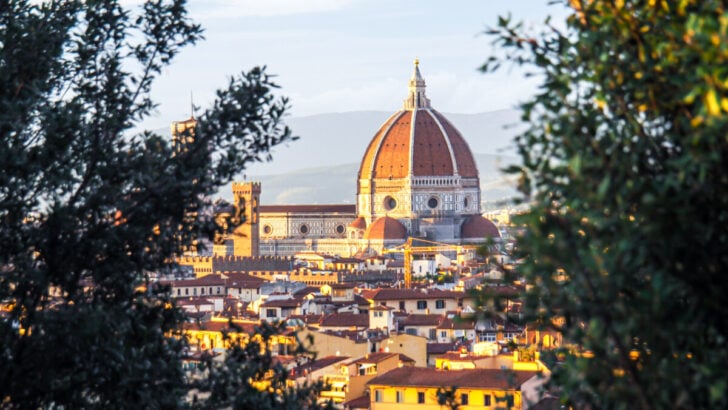

This stunning region boasts countless lesser-known towns, all of which are worth visiting. Some showcase medieval walls, while others offer spectacular scenery and wine-tasting experiences. Those are just pieces of the Tuscan puzzle; to piece it together, you must visit yourself.
Below, we outline the impressive architecture, ancient churches, numerous restaurants, and Renaissance buildings of the most beautiful cities in Tuscany. Learn about the region’s most famous towns and hidden gems and start planning a trip!
Page Contents
The Most Beautiful Towns and Villages in Tuscany
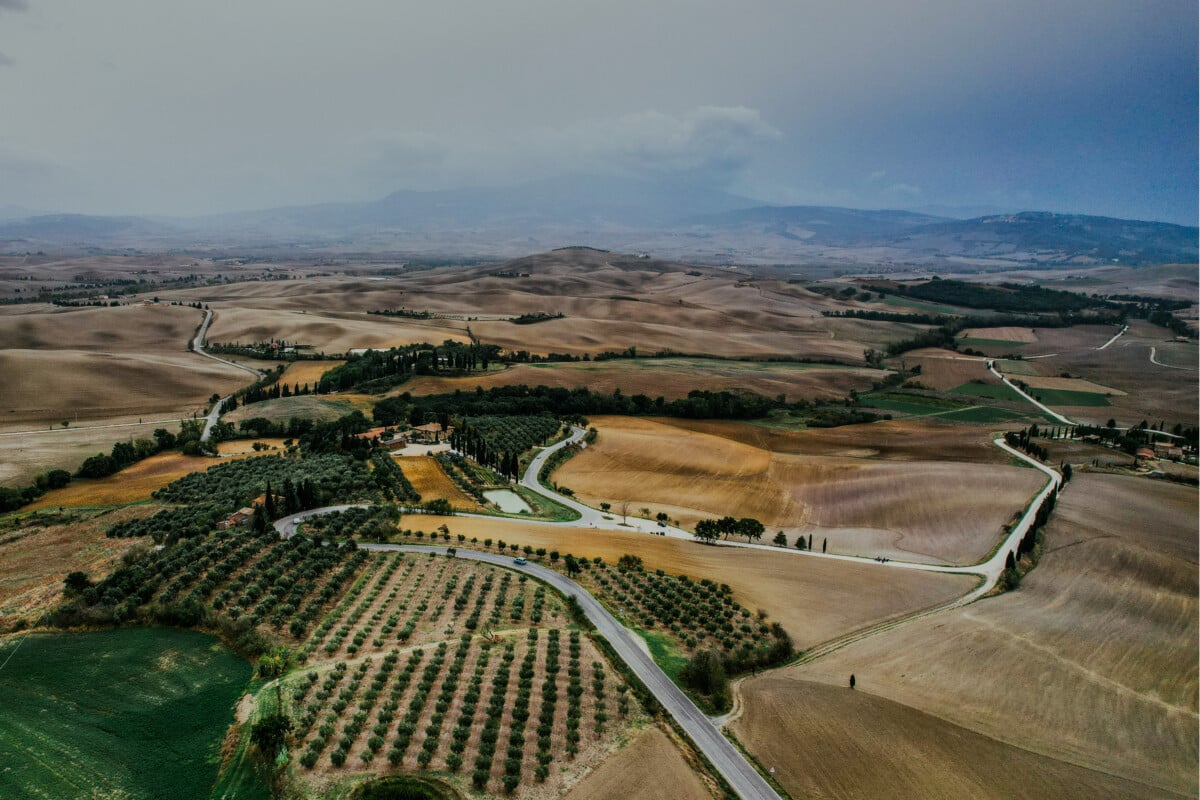

| Town | Key Highlight |
|---|---|
| San Gimignano | Famous for its towers |
| Pienza | Known as an “ideal city” from Renaissance |
| Lucca | Noted for its intact Renaissance-era city walls |
| Cortona | Perched on a hill with stunning views |
| Volterra | Renowned for its Etruscan roots and alabaster production |
| Montepulciano | Famous for its wine |
1. Pienza
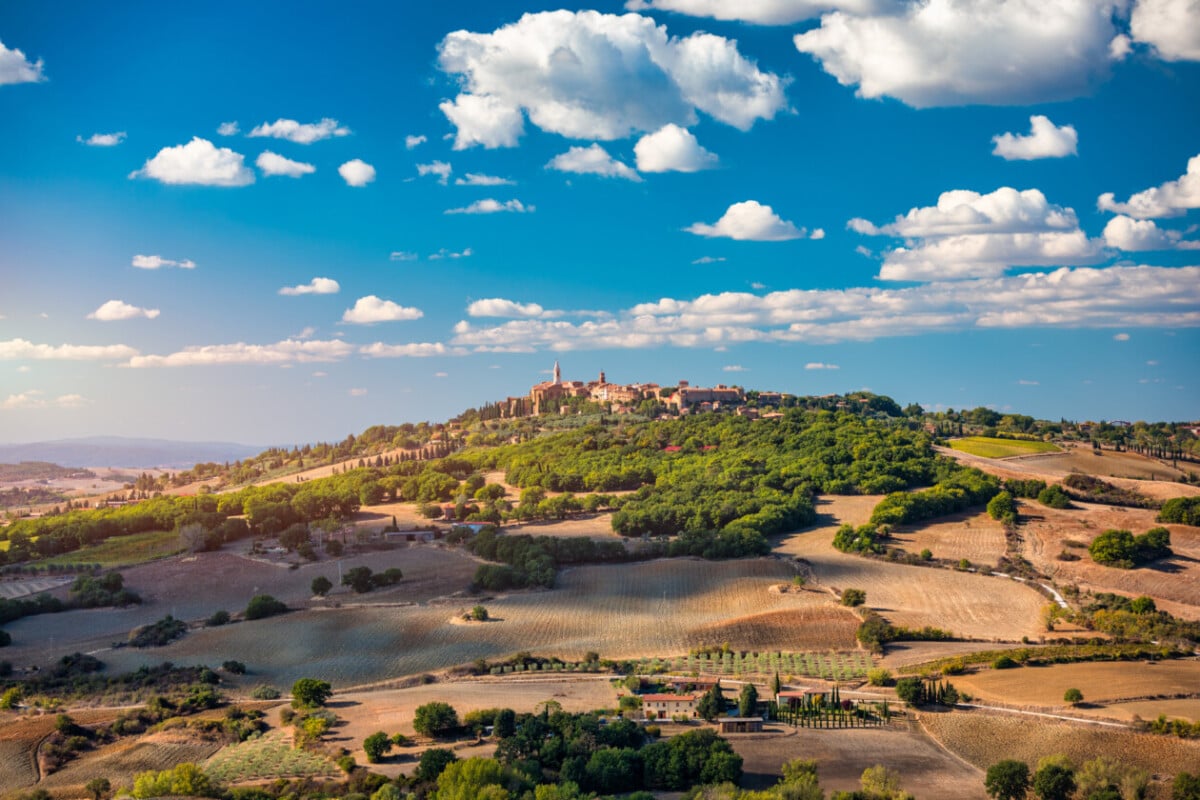

The first Tuscan town on our list is none other than an “ideal city” from the Renaissance: Pienza, a UNESCO World Heritage site and a beautiful historical treasure. Ideal in this context refers to Pienza’s concept plan and how it encompasses the planner’s goals through its structures, layout, and accessibility – way ahead of its time.
This medieval city offers an array of landmarks, including Palazzo Piccolomini and Piazza Pio II; the latter was named after Pope Pius II (Enea Silvio Piccolomini), born there in 1405. Let us ask you this: how dedicated are you to your roots? Enough to renovate an entire village in Italy?
That’s right—Pienza’s layout and design as we know it today was commissioned by that very Pope. Experts Bernardo Rossellino and Leon Battisti Alberti were entrusted with the renovations, which resulted in the gorgeous 15th-century architecture the city is recognizable by.
When visiting Pienza, try classic Central Italian food. Tuscan fare boasts regional specialties, which you can taste at local restaurants like Sette di Vino, Poderuccio, and La Tana Del Goloso.
As Pienza is located in Val d’Orcia, visitors traveling in the area may want to rent a car. This is the best way to guarantee ease of travel in the famous Tuscan countryside, although there are mixed-route buses and trains. We’d recommend visiting in either September or April-May when it’s not too hot.
Best Place to Stay:
Activities:
2. Abbadia San Salvatore
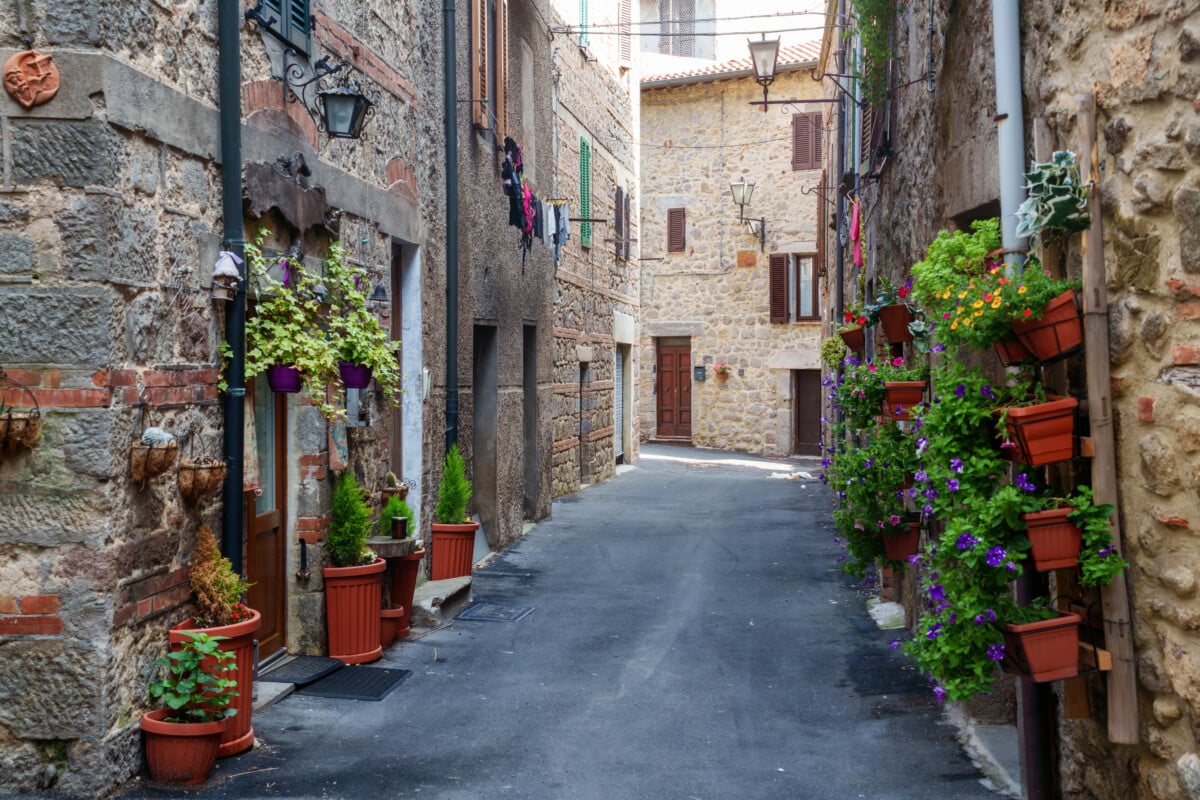

Next is lovely Abbadia San Salvatore, one of many beautiful Tuscan towns with a long, colorful history from the Middle Ages. These narrow streets carry you past the town’s age-old abbey to a local mining museum, highlighting its proximity to Monte Amiata, a historic compound lava dome.
At a glance, Abbadia San Salvatore may look more modern than other towns on this list—but that’s just at a glance. Its tree-lined avenues shift into a small town main square, wherein it reveals itself as a historic hidden gem. Along these streets, you’ll see Palazzo del Podestà, Palazzo del Popolo, the Santa Croce (original to 1221, rebuilt 19th century), and Sant’Angelo churches (dating to 1313, now a private home).
Local spots showcase Tuscan and other Mediterranean meals, including wild boar ragu, Florentine steak, and more. Stop by Ristorante Albergo Sella or Ristorante Generale Cantore to take bites out of both.
When traveling to Abbadia San Salvatore, we recommend taking a direct bus, a mixed train/bus route, or, again, renting a car. Like its neighbors, the best time to visit is likely during the less busy months, spring and early autumn.
Best Place to Stay:
Activities:
See Related: Best Day Trips From Florence, Italy
3. Lucca
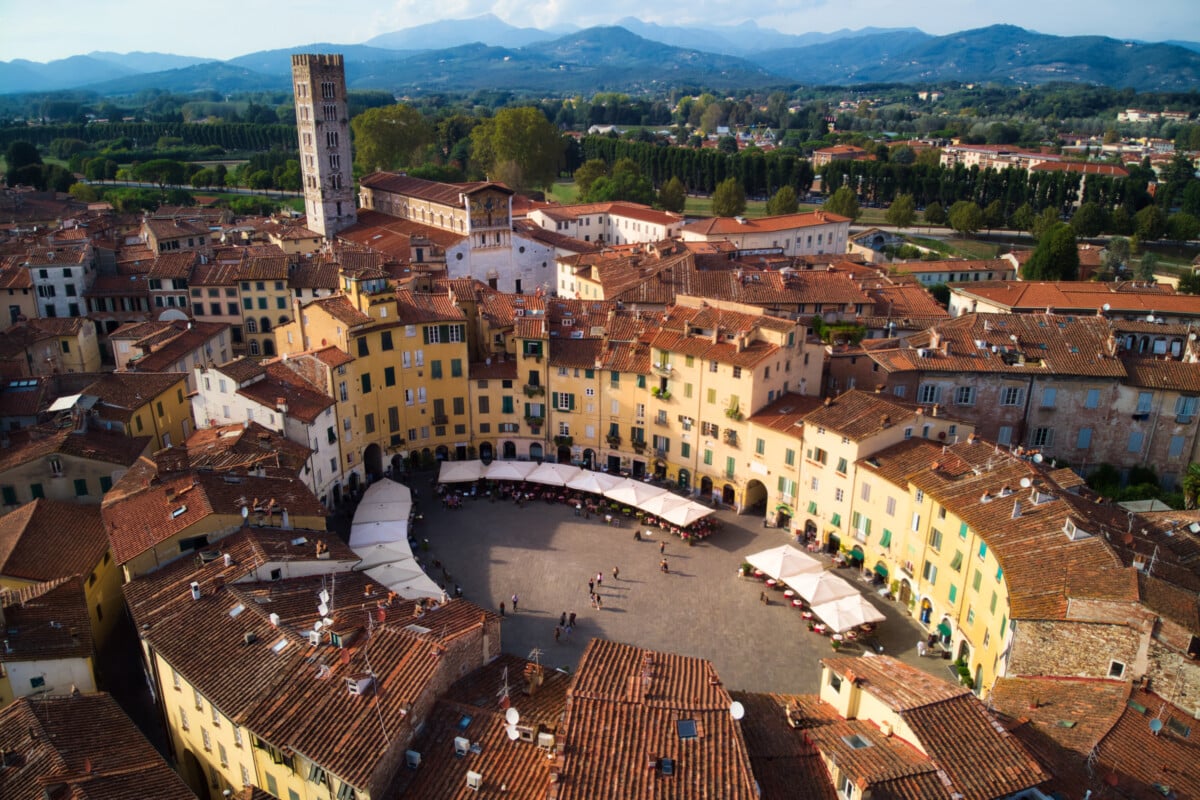

Noted for its intact Renaissance-era city walls, Lucca is another stunning location on our list of must-see Tuscan towns. As one of the region’s most beloved, artistic cities, this ancient town has earned its laurels; you can expect your trip to consist of a study of its historical attractions, like its fortifications and the sheer amount of places of worship.
Nicknamed “the town of a hundred churches,” Lucca is unique for this fact (although there aren’t exactly one hundred of them) and its presence in the center of the Lucca plain. This landscape was sculpted in antiquity by the Serchio River and has been a breathtaking spot since.
Lucca’s true beauty lies behind its Renaissance walls and in its old town square. The historic center hosts an annual Summer Festival, as well as a Comics & Games celebration that occurs every October. This is an unmissable event if you’re a board game lover like myself!
When traveling to Lucca, we recommend taking a train. As a bonus, the town is only a thirty-minute train ride from nearby Pisa. The best time to visit is summer, for the festival, or September-October for decent weather and fewer crowds.
Best Place to Stay:
Activities:
4. San Gimignano
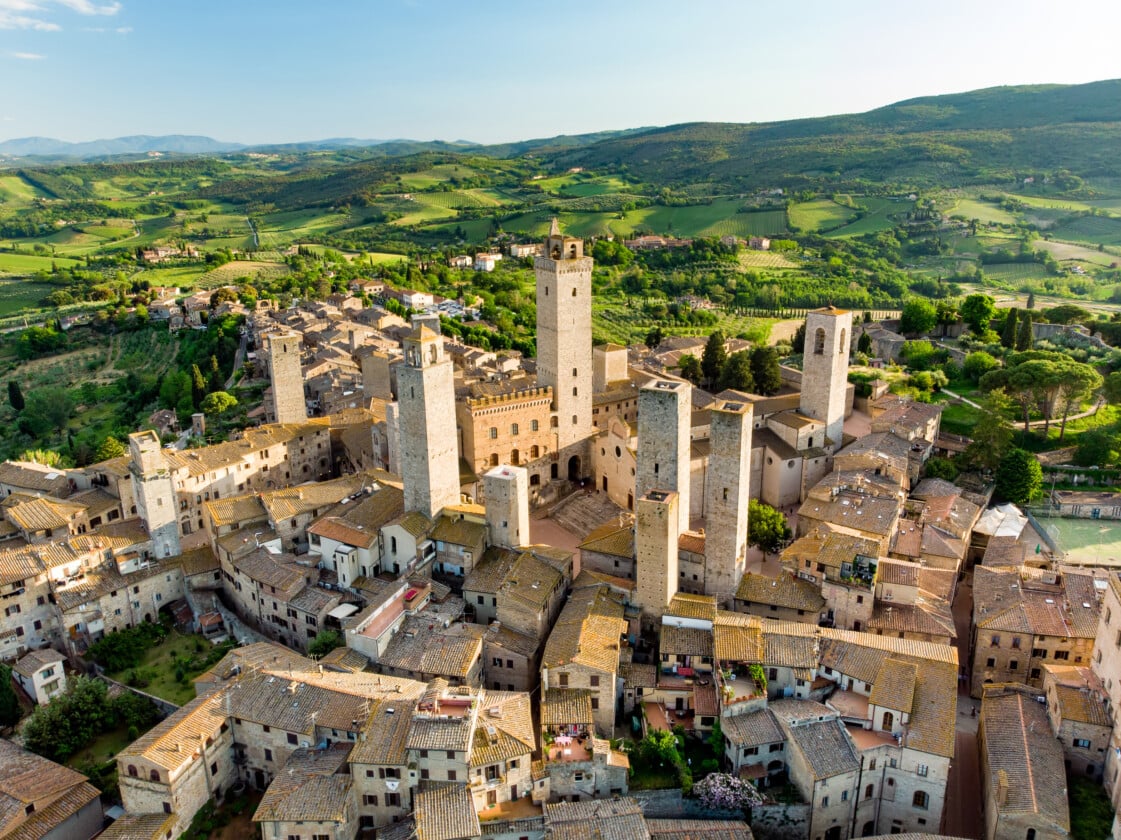

Of all the ancient towns and villages in Tuscany, San Gimignano stands out—mainly because of its buildings. Famous for its towers, this beautiful hilltop town boasts scenic views and unforgettable Tuscan architecture. Its skyscraper-like structures rise above the rest of the village, granting it the nickname “Manhattan of the Middle Ages.”
Naturally, you’ll find more than towers here. A Roman Catholic collegiate church of Santa Maria Assunta, located in Cortona, is a minor basilica that showcases a litany of important Renaissance frescoes; this includes work by Ghirlandaio, Gozzoli, di Bartolo, and more.
Given the fantastic history of this “modernized” Tuscan village, San Gimignano earned its designation as a UNESCO World Heritage site in 1990. When traveling here, we recommend using the train or bus systems.
Vehicles work, but the public transportation system is more than satisfactory. The best time to visit is early spring and late fall.
Best Place to Stay:
Activities:
5. Cortona
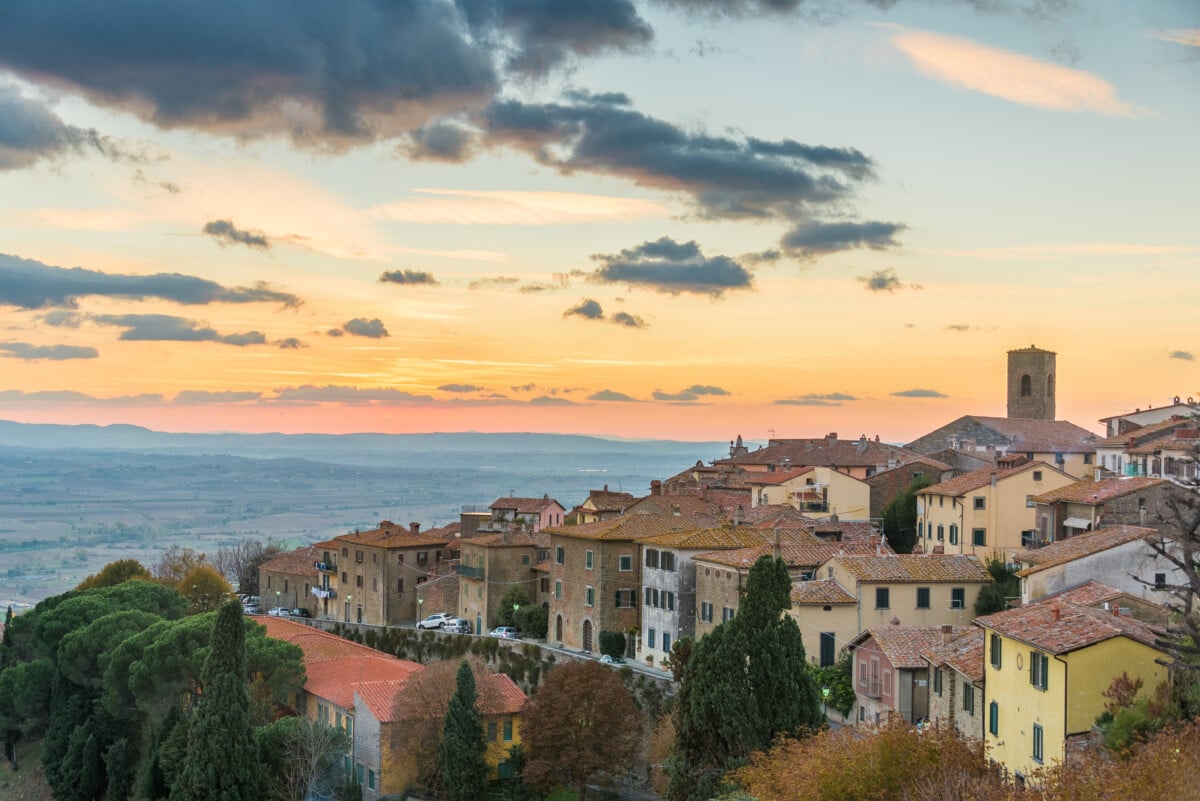

One of the most beautiful towns in Tuscany is undoubtedly, Cortona. It’s gorgeous, first off, perched on a hill with a stunning view of the surrounding countryside. The central village of the commune may be small, yet it boasts a brilliant history and oozes charm.
The name of the town is actually derived from Curtun, an Etruscan word that was found engraved on a votive in the city center. You can visit the Etruscan Academy Museum to see for yourself: they have countless artifacts on display, from ancient contracts to burial boats and Etruscan art in various mediums.
While here, visit the Santa Margherita Sanctuary and the partner to San Gimignano’s collegiate, the original Santa Maria Assunta. The former is located just outside of town. It displays impressive Neo-Gothic architecture, while the latter served as the seat for the Bishops of Cortona from 1507 until as recently as 1986.
We recommend traveling by train or renting a car to get to Cortona. The distance is comparable in both modes, although the roads are faster. It’s worth seeing, no matter the time of year.
Best Place to Stay:
Activities:
See Related: Best Restaurants in Florence, Italy
6. Montepulciano
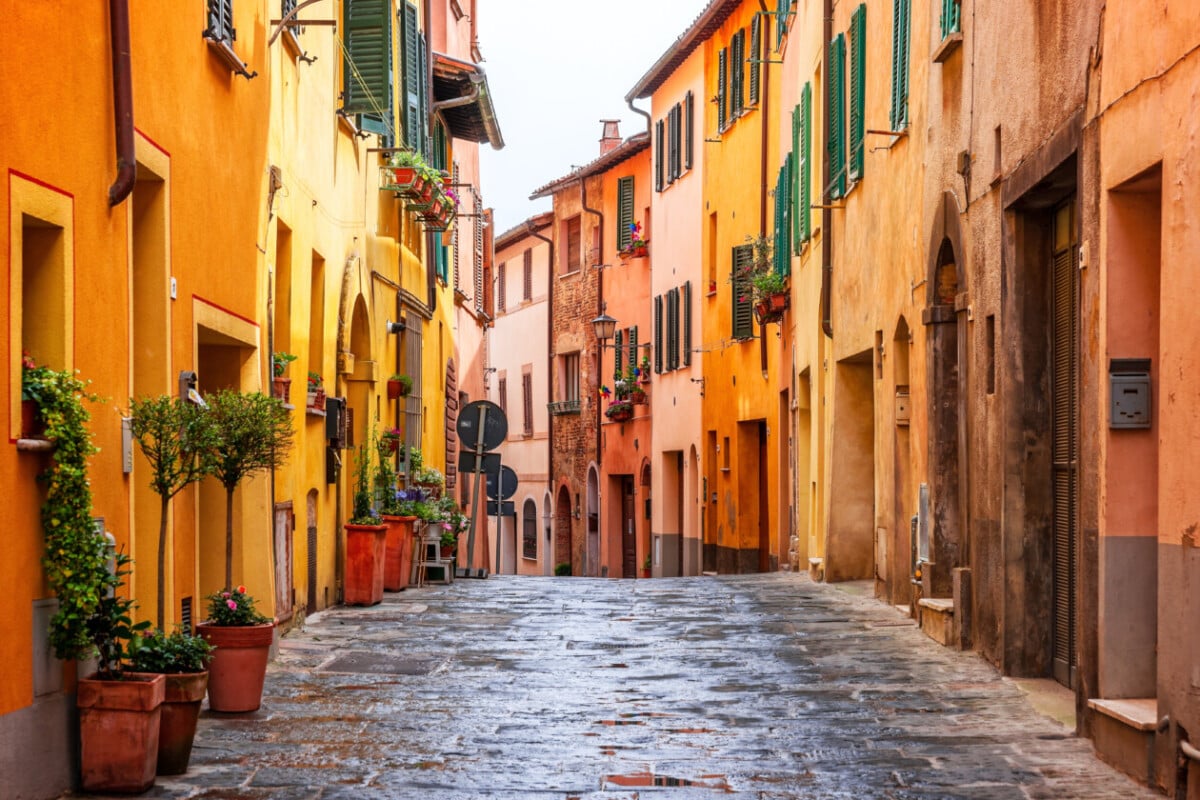

Montepulciano is unquestionably one of the most important places in Italy for wine, if not the most famous town in Tuscany. Its rolling hills are known as some of the top-rated Tuscany sights, and for good reason—but part of that definitely has something to do with vino.
While separate from the famed Chianti wine region, Montepulciano boasts impeccable winemaking. From Trebbiano to the well-known red Montepulciano d’Abruzzo, you’ll have choices; the latter pairs well with meat and cheese, so you’re also in for some delectable dining.
Before or after your wine tasting, sit down to try fine local cuisine: Cinta Senese sausage, Chianina steak, or pappardelle pasta with wild boar meat sauce… all of which pair well with wine.
You’ll have countless things to see and do when sightseeing or embarking on a Montepulciano wine tour. Located in the region (nearby Arezzo) is Piazza Grande, which has garnered even more fame in recent years thanks to its appearance in the movie adaptation of Stephenie Meyer’s New Moon.
When visiting Montepulciano, we recommend traveling by train or car in September or early spring. It’s a pretty place no matter when you visit, and it doesn’t get too crowded.
Best Place to Stay:
Activities:
7. Volterra
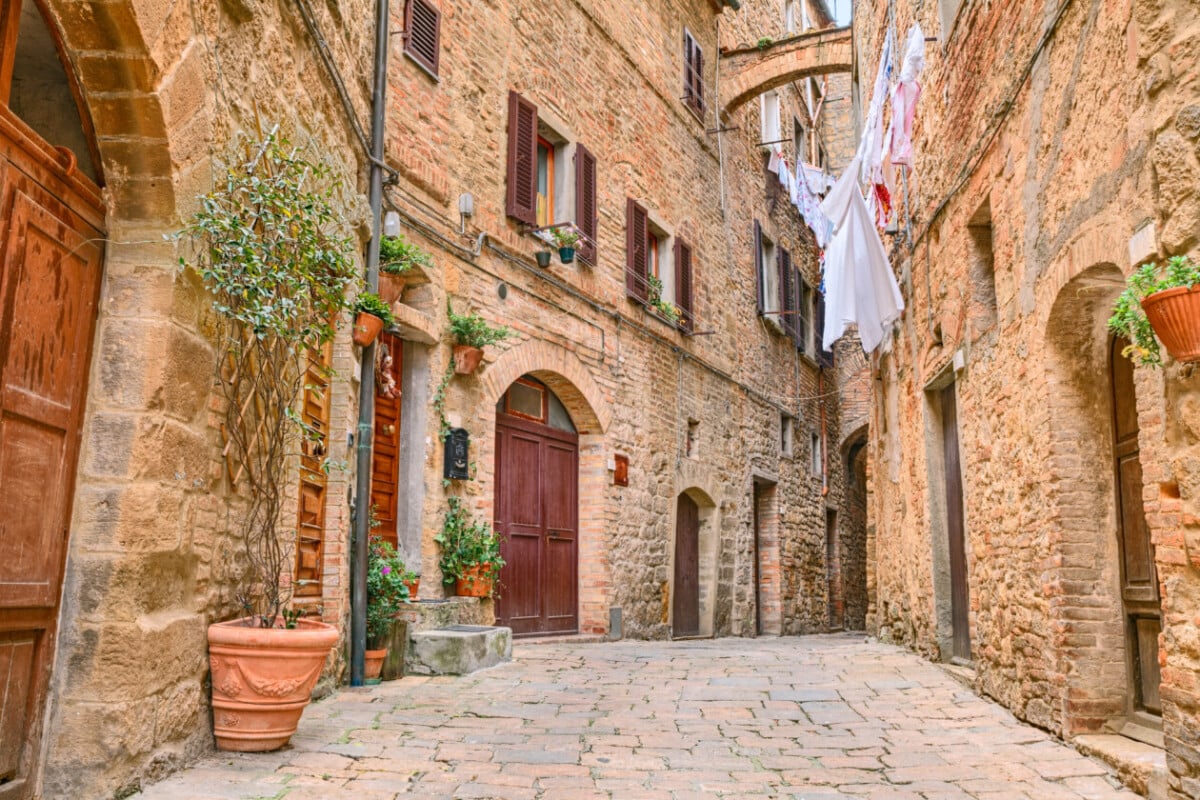

Another of the most beautiful villages in the Tuscan region is Volterra, whose terracotta coloring makes itself known at first glance. Renowned for its Etruscan roots and alabaster production, this picturesque town was built on a hill right between two valleys—Era and Cecina.
What makes Volterra particularly special is its double walls, which are both Etruscan in origin and from the 13th century. Formerly a respected city-state of Ertruria, Volterra’s alabaster development has been consistent and essential for generations.
If you really want to get into the nitty-gritty of its impact, though, medieval reenactments are held annually. “Volterra AD” occurs on two Sundays in August, while other events, like the Marzuolo Truffle Market Exhibition (held in March) and Volterragusto (held in October), take up other dates in the calendar.
The most efficient way to visit Volterra is by car, although you could combine a train route and take a taxi. We’d recommend visiting while the weather is warm—it is a hilltop town!
Best Place to Stay:
Activities:
8. Siena
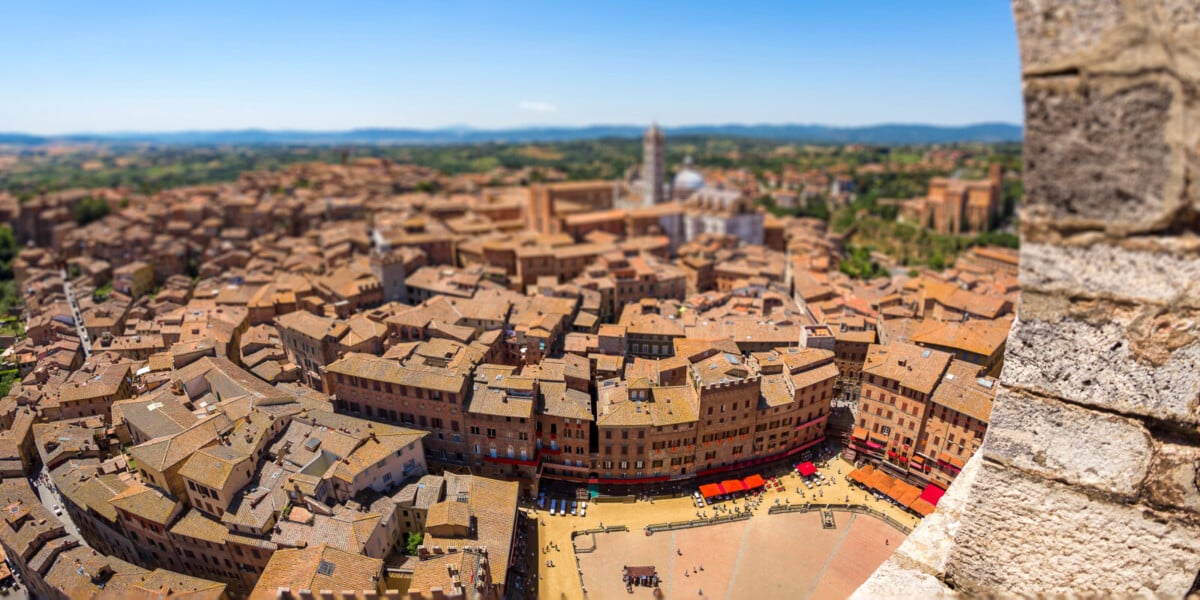

As a traveler who’s recently visited Siena, I have good authority to say that this is one of the region’s absolute must-see, must-stay locations. It’s unquestionably one of the most beautiful towns in Tuscany, with some of the most unique traditions I’ve ever seen.
It’s only about an hour from Florence, so if you’re in Italy to visit that famous city, make time for a day trip. You won’t be disappointed.
Siena is a city dedicated to ceremony. The architecture you see present today is incredibly similar, if not the same, as it was in 1300; these impeccably preserved structures, such as the Siena Cathedral (Duomo di Siena), are just part of what makes it unique.
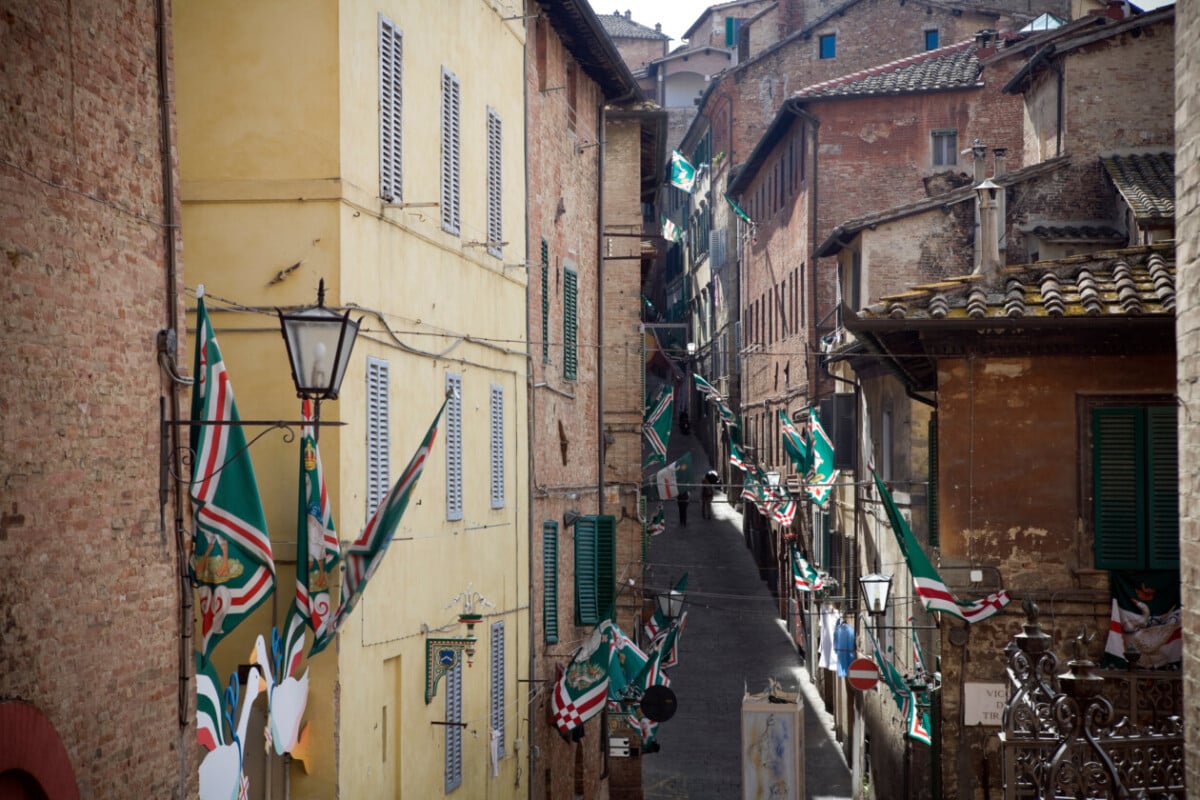

What really makes Siena shine is its unique exclusivity. The city rides on a centuries-old tradition called the Palio di Siena, a biannual horse race held in Piazza del Campo, the historic city center. This event isn’t to be treated lightly—it’s a competitive celebration that earns the city’s districts, or their contrade, bragging rights for the coming months.
Winners of the Palio display their flags proudly for all the city to see, and they’re only changed when another winner takes the crown. In fact, having been in Siena, I can attest to the Sienese dedication to their respective contrade; as I was told by a local, “We are contrada first, Sienese second, Tuscan third, and Italian fourth.”
We recommend traveling to Siena by bus or train for convenience. The city’s center is mainly pedestrian, and public transport is better. You can visit anytime!
Best Place to Stay:
Activities:
9. Pitigliano
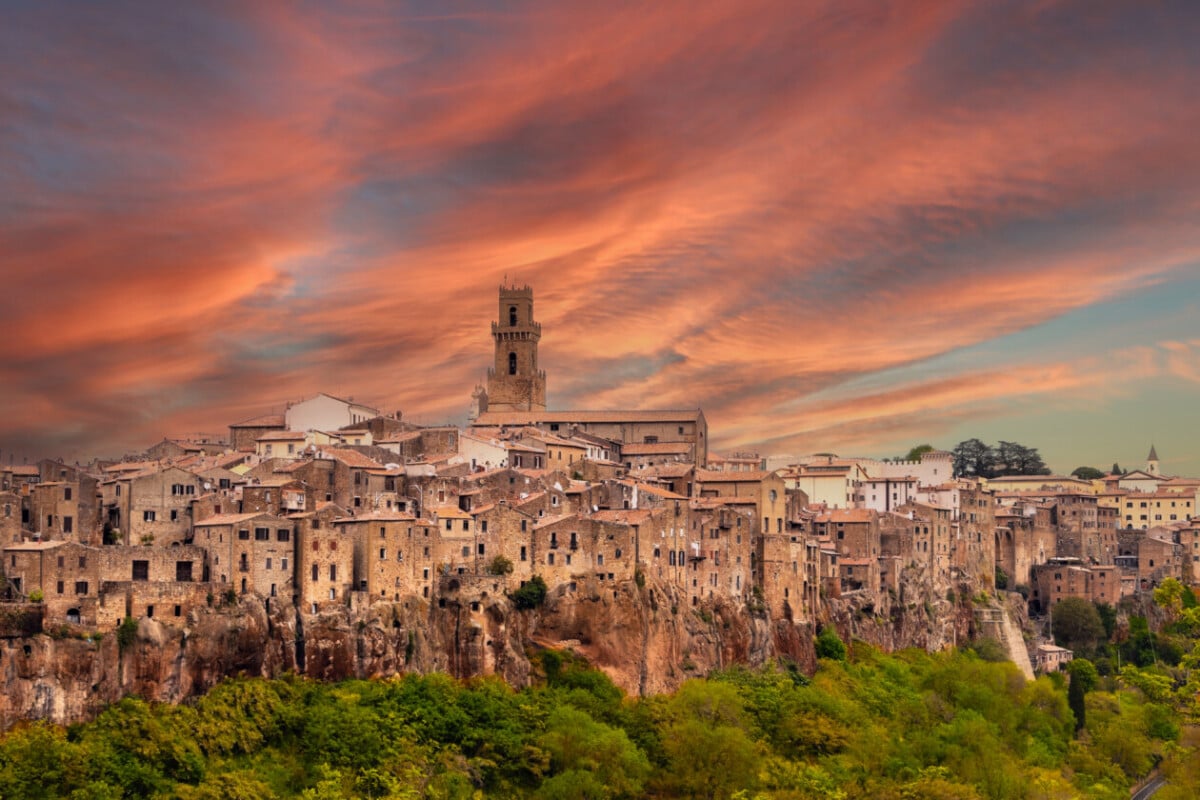

A wonderfully serene town in Southern Tuscany, Pitigliano is among the many hidden gems in the region that might fly under the radar. This relatively small village is built into a unique tuff cliffside—a type of rock composed of a minimum of 75% volcanic ash.
Pitigliano harbors an elaborate past composed of both legends and legitimate truth. Heavy Etruscan influences are evident in the region, and its name is said to be derived from a combination of Roman characters: Petilio and Celiano.
Historically, Pitigliano was known as “Little Jerusalem” due to its active Jewish community. You can visit its famed Jewish Ghetto in town or stop at the fascinating local vie cave nearby. There’s also an open-air archaeological museum for the history buffs among us.
The best way to reach Pitigliano is by train or car. The latter half of the trip will require a vehicle or taxi, so rent a car if you’d like! We’d recommend visiting during the warmer months.
Best Place to Stay:
Activities:
10. Monteriggioni
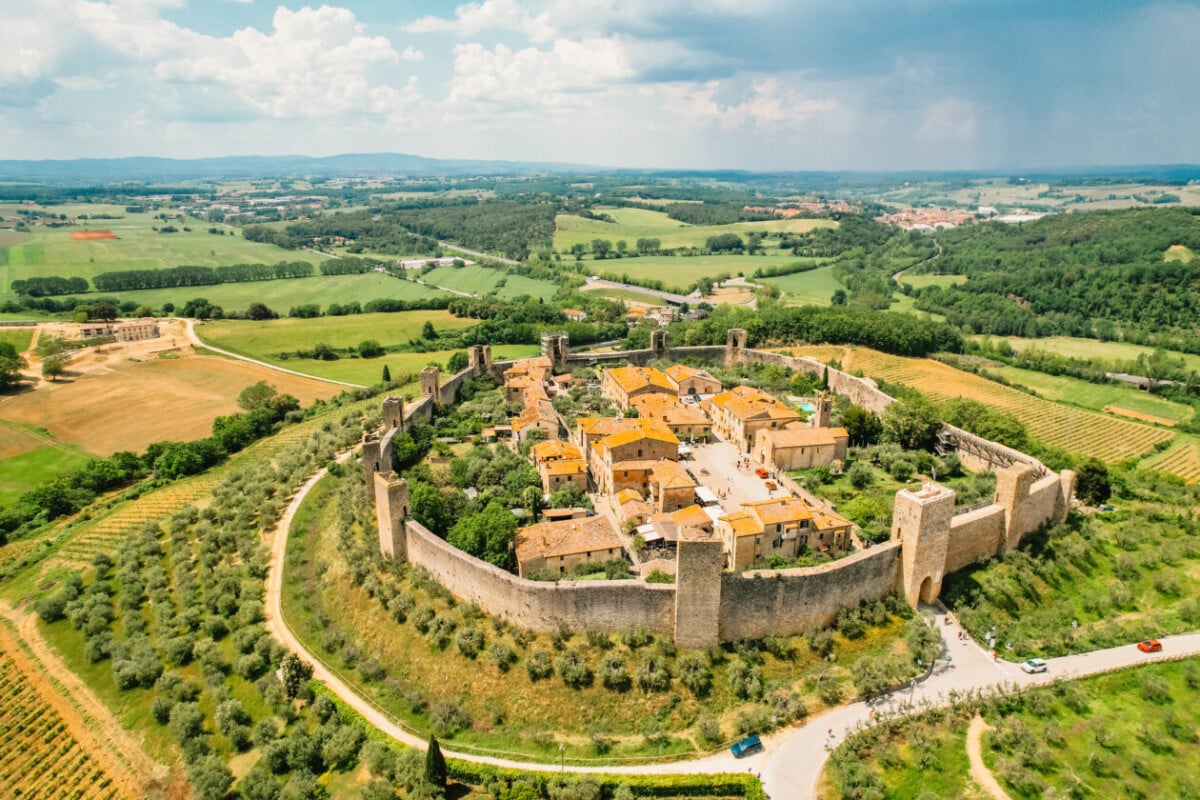

Another medieval town unquestionably worth exploring is the beautiful, encircled Monteriggioni. Like Lucca, one of this town’s most prominent features is its stoic, well-preserved Renaissance walls, effectively crowning the charming hilltop village.
While medieval architecture like this isn’t rare in Italy—so many beautiful towns possess it—it’s still special. The fortifications serve as a testament to the Renaissance era, and their presence in the Tuscan landscape pays a true homage to Italian culture and the local artisans of the time. Similarly, Monteriggioni is mentioned in Dante’s Divine Comedy, earning it some extra points.
A particular point of interest is Monteriggioni Castle, founded centuries ago (in the 1220s) by the Republic of Siena and the litany of formidable towers surrounding the village. From them, you’ll enjoy a panoramic view of Siena.
We recommend traveling by bus, train, or car when planning your visit. It’s best to visit during the warmer seasons, as it can get windy.
Best Place to Stay:
Activities:
See Related: Best Day Trips From Florence, Italy
11. Portoferraio
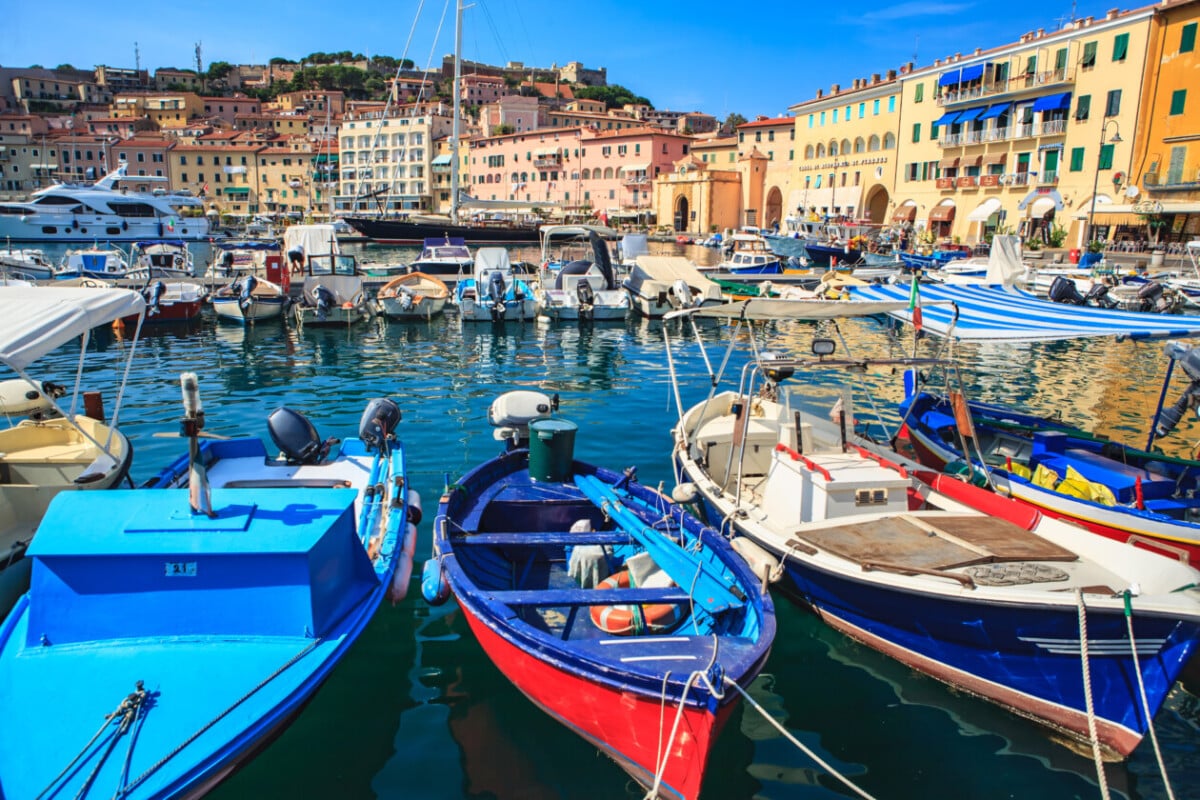

If you’re looking for a seaside vacation, Portoferraio is it. As the capital of beautiful Elba Island, it’s naturally one of the most gorgeous destinations in Tuscany and certainly one of the best places to visit.
A go-to spot for fresh, fishy food, ocean breezes, and sea salt spray, Portoferraio prides itself on its port. In fact, it was designed to be a fortified coastal city, and the subsequent building of impressive forts helped to guarantee that. In the 16th century, the town was gifted to a member of the affluent Medici family, who would hire architects to design the forts and help defend the coast of Italy from the Turks.
It’s not all history in this part of Italy, though. Annual music festivals (Festival Elba Isola Musicale d’Europa) and countless high-end restaurants spell an exciting trip for any visitor. Try traditional Italian seaside delights like Spaghetti alle Acciughe, Polpo all’Elbana, and Sburrita.
When visiting Portoferraio, you’ll inevitably have to travel by boat. The best way to reach the island is by car or train and then by ferry, and the best time to visit is summertime. There’s no better place than under the Tuscan sun!
Best Place to Stay:
Activities:
Related Resources:
- About the Author
- Latest Posts
A bona fide expert in budget travel, Lana has been to 25 countries across four continents (although she hopes to round that up to seven soon!), as well as 29 U.S. states. She has a penchant for country hopping and proudly presents tips and tricks to help our readers do the same. Lana is currently based near Philadelphia, but spends a significant amount of time in Italy with family.
She’s fluent in three languages – English, Italian, and American Sign Language – and, through her studies, has been inducted into the Phi Beta Delta Honor Society for International Scholars and the Gamma Kappa Alpha Italian Language Society.


